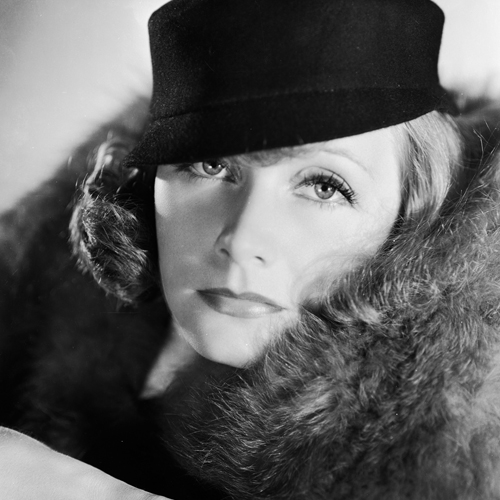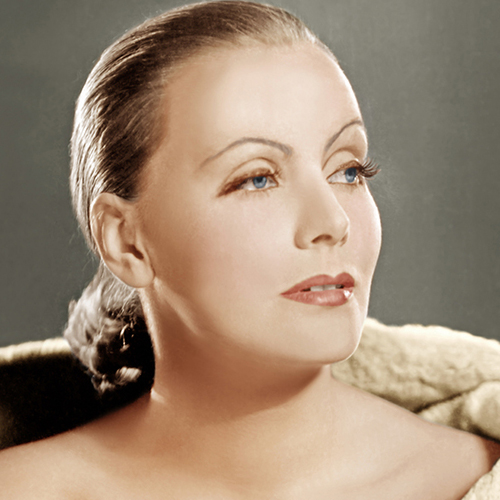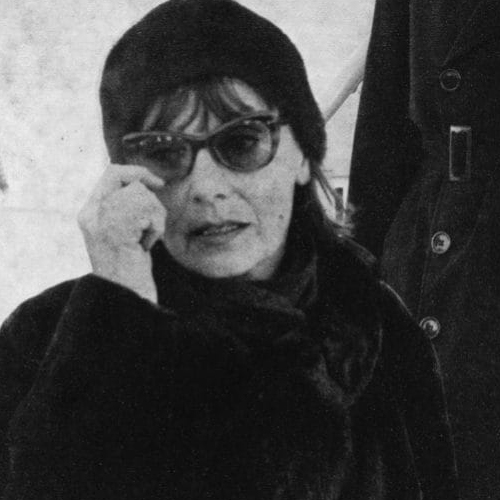
Greta Garbo
Born: 18 September 1905
Died: 15 April 1990 (84 Years)
Cause: Garbo died on 15 April 1990, aged 84, in the hospital, as a result of pneumonia and renal failure.
Died: 15 April 1990 (84 Years)
Cause: Garbo died on 15 April 1990, aged 84, in the hospital, as a result of pneumonia and renal failure.

Greta Garbo

Greta Garbo

Greta Garbo
Greta Garbo (born Greta Lovisa Gustafsson; 18 September 1905 – 15 April 1990) was a Swedish-American actress. Regarded as one of the greatest actresses to ever be on screen, she was known for her melancholic, somber persona, her many film portrayals of tragic characters, and her subtle and understated performances. In 1999, the American Film Institute ranked Garbo fifth on its list of the greatest female stars of classic Hollywood cinema.
Garbo launched her career with a secondary role in the 1924 Swedish film The Saga of Gösta Berling. Her performance caught the attention of Louis B. Mayer, chief executive of Metro-Goldwyn-Mayer (MGM), who brought her to Hollywood in 1925. She stirred interest with her first American silent film, Torrent (1926). Garbo's performance in Flesh and the Devil (1927), her third movie, made her an international star. In 1928, Garbo starred in A Woman of Affairs, which catapulted her at MGM to its highest box-office star, usurping the long-reigning Lillian Gish. Other well-known Garbo films from the silent era are The Mysterious Lady (1928), The Single Standard (1929) and The Kiss (1929).
With Garbo's first sound film, Anna Christie (1930), MGM marketers enticed the public with the tagline "Garbo talks!" That same year she starred in Romance and for her performances in both films she received the first of three nominations for the Academy Award for Best Actress. By 1932 her success allowed her to dictate the terms of her contracts and she became increasingly selective about her roles. She continued in films such as Mata Hari (1931), Susan Lenox (Her Fall and Rise) (1931), Grand Hotel (1932), Queen Christina (1933) and Anna Karenina (1935).
Many critics and film historians consider her performance as the doomed courtesan Marguerite Gautier in Camille (1936) to be her finest and the role gained her a second Academy Award nomination. However, Garbo's career soon declined and she became one of many stars labeled box office poison in 1938. Her career revived with a turn to comedy in Ninotchka (1939) which earned her a third Academy Award nomination. But after the failure of Two-Faced Woman (1941), she retired from the screen at the age of 35 after acting in 28 films. In 1954, Garbo was awarded an Academy Honorary Award "for her luminous and unforgettable screen performances".
After retiring, Garbo declined all opportunities to return to the screen and, shunning publicity, led a private life. She became an art collector whose collection, though containing many works of negligible value, included works from Pierre-Auguste Renoir, Pierre Bonnard and Kees van Dongen, which were worth millions of dollars when she died.
Garbo was successfully treated for breast cancer in 1984. Towards the end of her life, only Garbo's closest friends knew she was receiving six-hour dialysis treatments three times a week at The Rogosin Institute in New York Hospital. A photograph appeared in the media in early 1990, showing Koger assisting Garbo, who was walking with a cane, into the hospital.
Garbo died on 15 April 1990, aged 84, in the hospital, as a result of pneumonia and renal failure. Daum later claimed that towards the end, she also suffered from gastrointestinal and periodontal ailments.
Garbo was cremated in Manhattan, and her ashes were interred in 1999 at Skogskyrkogården Cemetery just south of her native Stockholm.
Garbo had invested wisely, primarily in stocks and bonds, and left her entire estate of $32 million (equivalent to $66,000,000 in 2021) to her niece.
(wikipedia)
Garbo launched her career with a secondary role in the 1924 Swedish film The Saga of Gösta Berling. Her performance caught the attention of Louis B. Mayer, chief executive of Metro-Goldwyn-Mayer (MGM), who brought her to Hollywood in 1925. She stirred interest with her first American silent film, Torrent (1926). Garbo's performance in Flesh and the Devil (1927), her third movie, made her an international star. In 1928, Garbo starred in A Woman of Affairs, which catapulted her at MGM to its highest box-office star, usurping the long-reigning Lillian Gish. Other well-known Garbo films from the silent era are The Mysterious Lady (1928), The Single Standard (1929) and The Kiss (1929).
With Garbo's first sound film, Anna Christie (1930), MGM marketers enticed the public with the tagline "Garbo talks!" That same year she starred in Romance and for her performances in both films she received the first of three nominations for the Academy Award for Best Actress. By 1932 her success allowed her to dictate the terms of her contracts and she became increasingly selective about her roles. She continued in films such as Mata Hari (1931), Susan Lenox (Her Fall and Rise) (1931), Grand Hotel (1932), Queen Christina (1933) and Anna Karenina (1935).
Many critics and film historians consider her performance as the doomed courtesan Marguerite Gautier in Camille (1936) to be her finest and the role gained her a second Academy Award nomination. However, Garbo's career soon declined and she became one of many stars labeled box office poison in 1938. Her career revived with a turn to comedy in Ninotchka (1939) which earned her a third Academy Award nomination. But after the failure of Two-Faced Woman (1941), she retired from the screen at the age of 35 after acting in 28 films. In 1954, Garbo was awarded an Academy Honorary Award "for her luminous and unforgettable screen performances".
After retiring, Garbo declined all opportunities to return to the screen and, shunning publicity, led a private life. She became an art collector whose collection, though containing many works of negligible value, included works from Pierre-Auguste Renoir, Pierre Bonnard and Kees van Dongen, which were worth millions of dollars when she died.
Garbo was successfully treated for breast cancer in 1984. Towards the end of her life, only Garbo's closest friends knew she was receiving six-hour dialysis treatments three times a week at The Rogosin Institute in New York Hospital. A photograph appeared in the media in early 1990, showing Koger assisting Garbo, who was walking with a cane, into the hospital.
Garbo died on 15 April 1990, aged 84, in the hospital, as a result of pneumonia and renal failure. Daum later claimed that towards the end, she also suffered from gastrointestinal and periodontal ailments.
Garbo was cremated in Manhattan, and her ashes were interred in 1999 at Skogskyrkogården Cemetery just south of her native Stockholm.
Garbo had invested wisely, primarily in stocks and bonds, and left her entire estate of $32 million (equivalent to $66,000,000 in 2021) to her niece.
(wikipedia)

